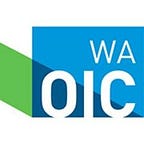Wildfire Awareness Month is as important as ever
May is Wildfire Awareness Month. The first Saturday in May is Wildfire Community Preparedness Day.
After 2023’s devastating wildfires — which included the Gray and Oregon Road fires near Spokane — Commissioner Mike Kreidler’s office has been helping people both recover from, and prepare for, the next fire season.
Here’s a few ideas on how to make sure you’re aware in May.
Prepare your home
The Insurance Institute for Business and Home Safety’s Wildfire Prepared Home designation helps homeowners take preventative measures for their home and yard.
Learn about the program, if your home is eligible, and the designation process here.
IBHS presented in the OIC’s Wildfire Symposium last fall, with CEO Roy Wright covering what they’ve learned and how homeowners can mitigate fire losses.
Build community resilience
Building community resilience is one of the best ways to fight potential fire damage. Per the Washington State Department of Natural Resources:
Each year, wildland fires consume homes in the wildland-urban interface — defined as areas where homes are built near or among lands prone to wildland fire. Studies show that as many as 80 percent of homes lost to wildland fire may have been saved if brush around the homes were cleared and defensible space created around structures. There is no better time than now to prepare and educate your family, friends and neighbors. Make sure everyone knows what to do to protect people and homes in case of fire.
- Prepare around your home. If your home is built in or near the forest, follow these steps to protect your home from wildfire. When developing your home landscaping, try planting fire-resistant plants to help reduce your risk from wildfire.
- Unite with your neighbors — start a Firewise Communities/USA® Recognition site.
- Know the outdoor burning rules. DNR regulates outdoor burning on all forestlands where we provide wildfire protection. Don’t burn outdoors until you know the rules.
- Have a plan when it’s time to leave — Ready, Set, Go!
DNR also offers its Community Wildfire Resilience and Preparedness program, which creates pathways for communities in Washington state to adapt, prepare, and recover from wildfire. Guy Giffords, from DNR, presented on the program during last fall’s Wildfire Symposium.
Be ready for recovery
The OIC sent insurance experts to staff the disaster recovery centers in Elk and Medical Lake and found that most people with questions were underinsured — which means they had coverage in place, but the cost to replace their home and possessions was more than the maximum of their policy.
- Review your policy each spring. Check your coverage regularly to make sure it includes adequate replacement coverage. Talk to your agent or broker and ask about additional living expenses coverage — which pays for living expenses over and above your normal living expenses if your house is damaged or destroyed and you need another place to stay while it’s being repaired or rebuilt.
- You’ll need special coverage to protect specific valuables, such as jewelry, fine art, and other items that may have limited coverage under your homeowner policy.
- Prepare a household inventory. Filing a claim is faster, and easier, with a detailed inventory of your belongings. The NAIC’s Home Inventory App makes it easier.
